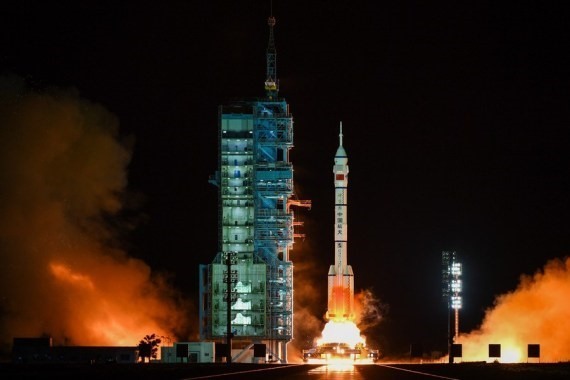China accelerates plans to build solar power plants in space

According to the updated plan in the article published in the journal Science and Technology Chinese Universe On June 2, a satellite will be launched in 2028 to test wireless power transmission technology from space to the ground from an altitude of 400 km.
In the paper, the researchers say the satellite will convert solar energy into microwaves or lasers and direct the beams of energy to various targets, including fixed locations on Earth and satellites. satellite is moving.
The generated capacity will reach 10 kilowatts, just enough to meet the needs of a few households. This technology can be greatly scaled up and “effectively contribute to achieving the ultimate goal of carbon neutrality” – Professor Dong Shiwei at the National Key Laboratory of Science and Technology for Space Microwaves Head of the China Academy of Space Technology in Xi’an wrote in the article.
Professor Dong and his colleagues said the plan was first drafted in 2014 and changed in response to “recent technological progress and new situations at home and abroad”.

In March, the British Government announced that it was considering a proposal worth 16 billion pounds to put a factory solar power pilot into space by 2035 with the help of many European defense contractors, including Airbus.
The US military has also tested related technology aboard the X-37B space plane, and is considering a $100 million test to power a military outpost in space as early as 2025. Last month, NASA said it was working with the US Air Force on feasibility studies, after shelved the idea for more than two decades due to the complexity and cost of the infrastructure.
A space scientist in Shanghai with knowledge of the project but not directly involved, said that potential military applications, breakthroughs in transportation technology such as supersonic aircraft and the goal of reducing use The use of fossil fuels may have helped China invest heavily in this area.
In the paper, Professor Dong said, the technological challenges of building the first solar power plant in space will be unprecedented.
For example, transmitting high power microwaves over long distances requires an antenna hundreds or even thousands of meters long, and any movement from the solar wind, gravity, or repulsion can cause greatly reduce the efficiency and accuracy of energy transmission.
Other challenges include efficient cooling of various essential components; assembling very large infrastructure in orbit with multiple launches; penetrating the atmosphere in all weather by high frequency beam; and prevent damage from asteroids, space debris or a deliberate attack.
According to Professor Dong, Chinese space scientists and engineers have made some great advances in antenna control and other major challenges in recent years.

Under the new plan, a large-scale space solar power plant will be built in four phases.
Two years after the first launch, China will put another more powerful satellite into a geostationary orbit about 36,000 km from Earth to conduct more experiments.
A 10-megawatt power plant will begin powering several military and civilian facilities by 2035.
By 2050, the plant’s electricity output is expected to increase to 2 gigawatts, equivalent to one nuclear power plant and costs are reduced to a commercially acceptable level.
Professor Dong’s team predicts that a full beam could reach 230 watts per square meter above ground, on par with direct sunlight.
at Blogtuan.info – Source: laodong.vn – Read the original article here



